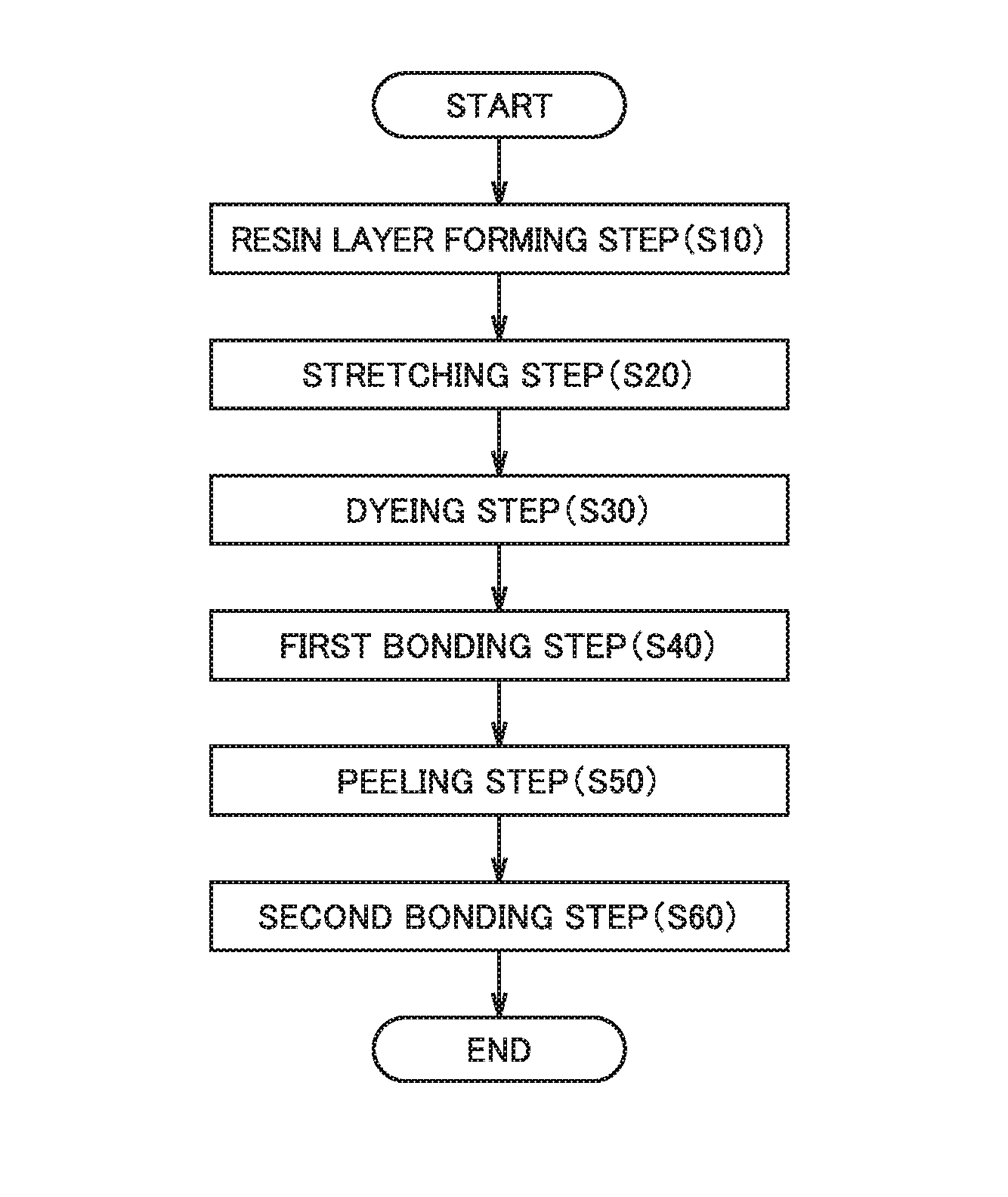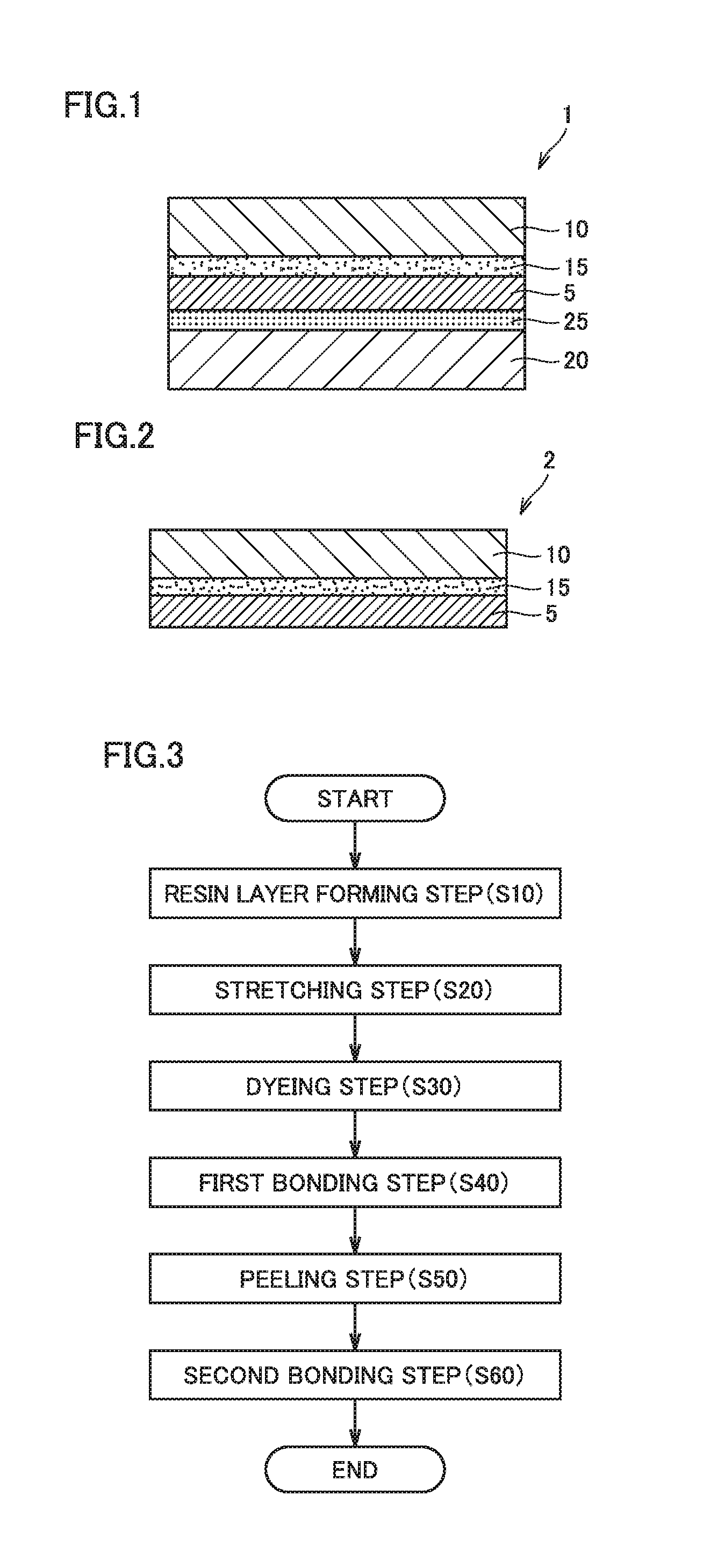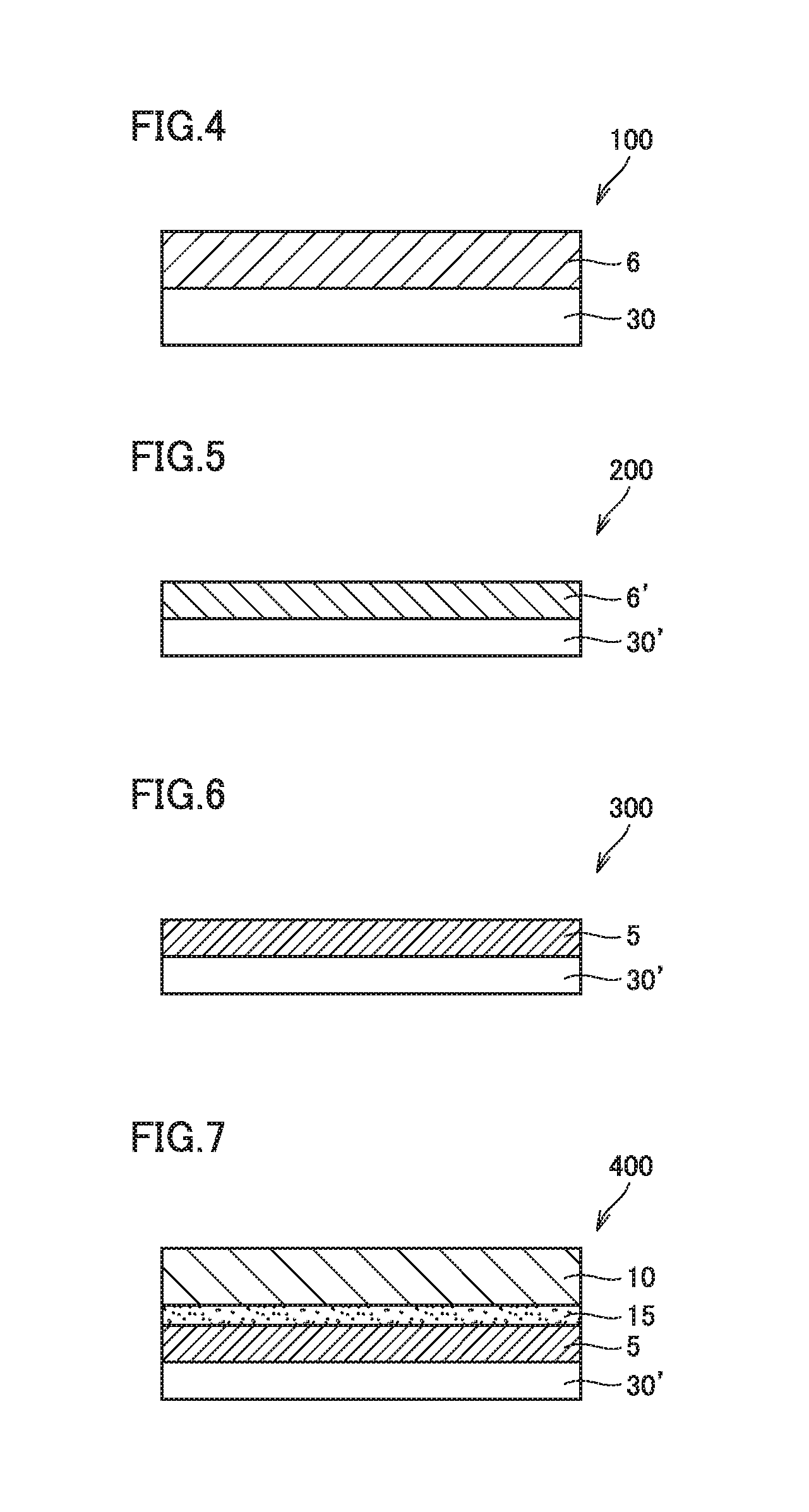Polarizer and polarizing plate including same
a technology of polarizer and polarizing plate, which is applied in the direction of polarizing elements, instruments, optics, etc., can solve the problems of insufficient measurement of above methods, insufficient addition of zinc ions, and easy red discoloration of polarizers with a small thickness
- Summary
- Abstract
- Description
- Claims
- Application Information
AI Technical Summary
Benefits of technology
Problems solved by technology
Method used
Image
Examples
example 1
(1) Primer Layer Forming Step
[0207]First, a 90-μm-thick unstretched polypropylene (PP) film (melting point: 163° C.) was provided as a substrate film. The substrate film had a tensile elasticity of 220 MPa at 80° C. The substrate film also had a thickness distribution of 3.0 μm / 10 mm in the widthwise direction.
[0208]Next, a polyvinyl alcohol powder (Z-200 manufactured by The Nippon Synthetic Chemical Industry Co., Ltd., 1,100 in average polymerization degree, 99.5 mol % in saponification degree) was dissolved in hot water at 95° C. to form a 3% by weight polyvinyl alcohol aqueous solution. A primer layer-forming coating liquid was obtained by mixing the resulting aqueous solution and a cross-linking agent (Sumirez Resin 650 manufactured by Taoka Chemical Co., Ltd.) in such a way that the weight ratio of the crosslinking agent to the polyvinyl alcohol powder was 5 to 6.
[0209]After one surface of the substrate film was subjected to a corona treatment, the primer layer-forming coating ...
example 2
[0219]A double side protective films-bearing polarizing plate was prepared in the same manner as in Example 1, except that a substrate film with an elasticity of 240 MPa was used instead. The polyvinyl alcohol-based resin layer had a thickness distribution of 0.5 μm / 10 mm in the widthwise direction.
example 3
[0220]A double side protective films-bearing polarizing plate was prepared in the same manner as in Example 1, except that after the polyvinyl alcohol-based resin layer-forming coating liquid was applied, the drying was performed using a floating-type drying furnace while end parts of the film were pinched with pinch rolls. The polyvinyl alcohol-based resin layer had a thickness distribution of 0.5 μm / 10 mm in the widthwise direction.
PUM
| Property | Measurement | Unit |
|---|---|---|
| thickness | aaaaa | aaaaa |
| heat resistance test | aaaaa | aaaaa |
| thickness | aaaaa | aaaaa |
Abstract
Description
Claims
Application Information
 Login to View More
Login to View More - R&D
- Intellectual Property
- Life Sciences
- Materials
- Tech Scout
- Unparalleled Data Quality
- Higher Quality Content
- 60% Fewer Hallucinations
Browse by: Latest US Patents, China's latest patents, Technical Efficacy Thesaurus, Application Domain, Technology Topic, Popular Technical Reports.
© 2025 PatSnap. All rights reserved.Legal|Privacy policy|Modern Slavery Act Transparency Statement|Sitemap|About US| Contact US: help@patsnap.com



